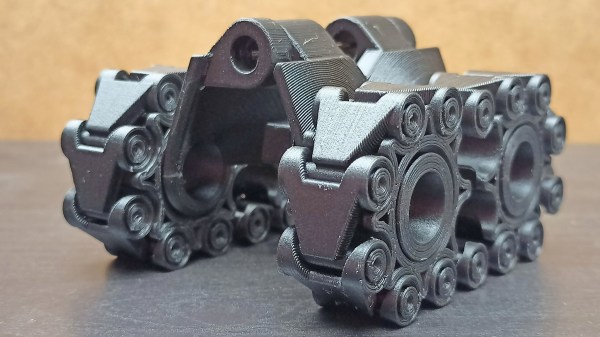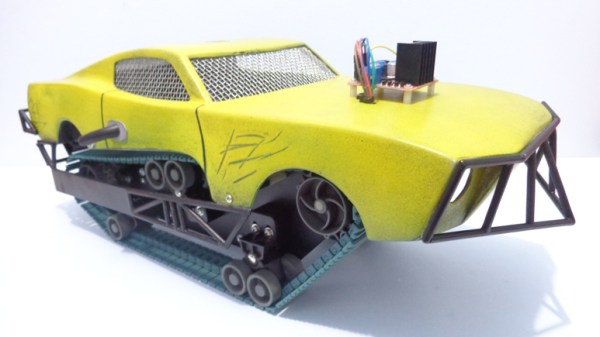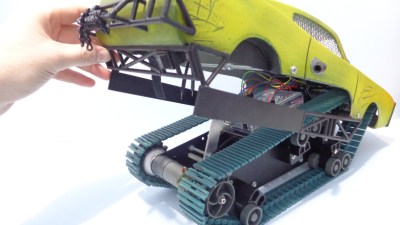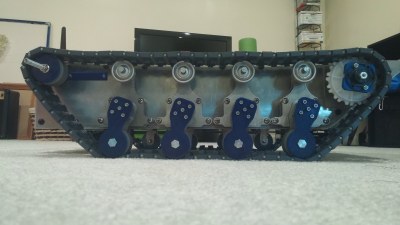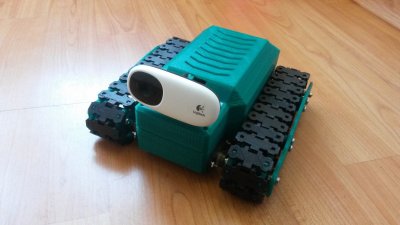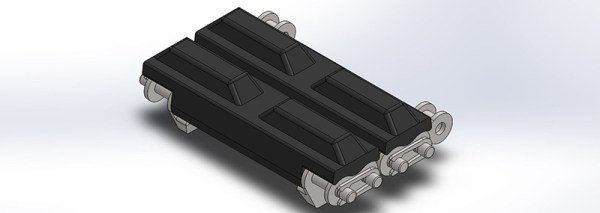What’s better than 3D printing a tank chassis with working tracks? How about 3D printing the entire thing, moving parts and all, as a single piece? That’s [3D Honza]’s PiPBOT-1, and it’s the culmination of a whole lot of design work.
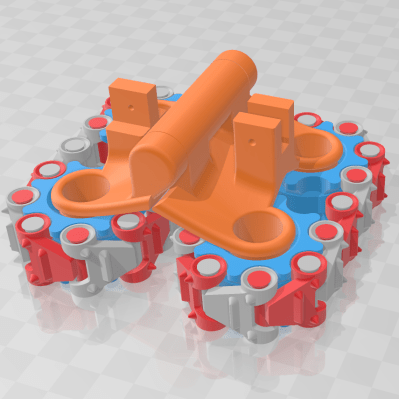
[3D Honza] has been sharing progress pictures and videos on his Twitter account, and just recently released the first version of his design. Version 1.0 is just the mechanics, but he’s already at work on version 2.0 which includes the ability to attach servos to drive the treads. At this writing, the design is currently downloadable directly from his site and includes CAD files, which is great to see.
One part of the design we’d like to draw your attention to is the chunky hinge that doubles as a kind of axial structure making up the body. This allows the tank to print in an unfolded state with the treads and wheels flat on the print bed. After printing, the tank gets folded up a bit like a taco to attain its final form. It’s a clever layout that allows the unit to be printed according to a filament-based 3D printer’s strengths, printing as a single piece that transforms into a small tank chassis, complete with working treads, in a few seconds.
When it comes to vehicles and bots, whether to choose wheels or tracks is a serious question our own Lewin Day has explained thoroughly. And for those of you who choose tracks, this design is great for small devices but don’t forget it’s always possible to go bigger when it comes to 3D-printed tanks.
Continue reading “One-Piece Tank Chassis Pushes Print-in-Place To New Heights”

